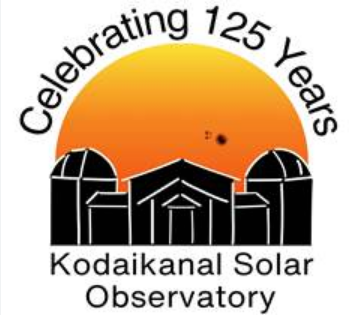Context:
The Indian Institute of Astrophysics (IIA) celebrated the 125th anniversary of the Kodaikanal Solar Observatory (KoSO) on April 1, 2024.
Historical Background of Solar Observations in India
- Since ancient times, various scholars including seafarers, mathematicians, astronomers, and
- physicists have studied the Sun extensively.
- The British East India Company established the Madras Observatory in 1792, marking the beginning of systematic astronomical observations in India.
- Pioneering efforts in celestial and solar photography during the 1871 solar eclipse further advanced observational techniques, establishing a foundation for future observatory-based astronomy in India.

The Great Drought and its Implications:
- The scanty rainfall and subsequent drought over South India in 1875 triggered the devastating Great Drought of 1876-1878, leading to widespread famine across India and several other countries, resulting in the loss of nearly 50 million lives.
- The correlation between solar activity (El Nino (1877-1878), strong Indian Ocean Dipole and warm North Atlantic Ocean conditions) and meteorological phenomena, such as droughts, prompted calls for systematic solar observations to better predict and mitigate such disasters.
Why study the Sun?
- The Sun is vital for life on Earth, providing the primary source of energy. Changes on its surface can have significant impacts on the Earth’s atmosphere.
- Solar storms and flares pose potential threats to satellite operations, power grids, and navigation systems. Understanding solar behavior helps mitigate these risks.
Establishment and Evolution of Kodaikanal Solar Observatory (KoSO)
- The British Raj’s Famine Commission suggested regular solar observations due to their potential link to India’s seasonal rainfall patterns.
- This recommendation led to the concept of establishing an Indian solar observatory to study solar changes and their correlation with Indian meteorology.
- Charles Michie Smith, a Scottish physicist at Madras Christian College, was tasked with finding the ideal location for this observatory in undivided India.
- In 1893, the decision to establish a solar observatory was made under the supervision of Smith, in Kodaikanal, Tamil Nadu, selected for its high altitude and clean environment.
- Equipment and experts from the Madras Observatory were transferred to Kodaikanal to kickstart operations.
- On April 1, 1899, the Madras Observatory merged with KoSO, consolidating resources and expertise in solar observations.
- In April 1971, the Government of India separated Astrophysics from the India Meteorological Department (IMD), bringing KoSO under the Indian Institute of Astrophysics (IIA), Bengaluru.
Significance of KoSO:
- KoSO boasts a vast digital repository with 1.48 lakh digitized solar images spanning 125 years, totaling 10 terabytes.
- This repository includes 33,500 white-light images showcasing sunspots, along with thousands of other daily solar images since the early 20th century.
- KoSO stands out as the only observatory providing high-resolution digitized images covering over 75% of this lengthy period.
- KoSO houses has advanced instruments like the H-alpha telescope, White light Active Region Monitor (WARM), and a solar tunnel telescope, facilitating comprehensive observations of the Sun’s photosphere and chromosphere layers.
Contributions of KoSO:
- Instrumentation: From the Bhavnagar Telescope to modern CCD cameras, KoSO has continually evolved its observational techniques, capturing solar images with increasing precision.
• Scientific Discoveries: KoSO’s contributions extend beyond solar physics to encompass areas such as cosmic rays, radio astronomy, and ionospheric physics, reflecting its multidisciplinary approach.
- Several important observations were made– the spectroscopic observations taken during the August 18, 1868, total solar eclipse from Guntur in Andhra Pradesh led to the discovery of helium, the Universe’s second-most abundant element after hydrogen.
- Digital Repository: With the digitization of its vast archives, KoSO has democratized access to solar data, fostering global collaboration and advancing solar physics research.

